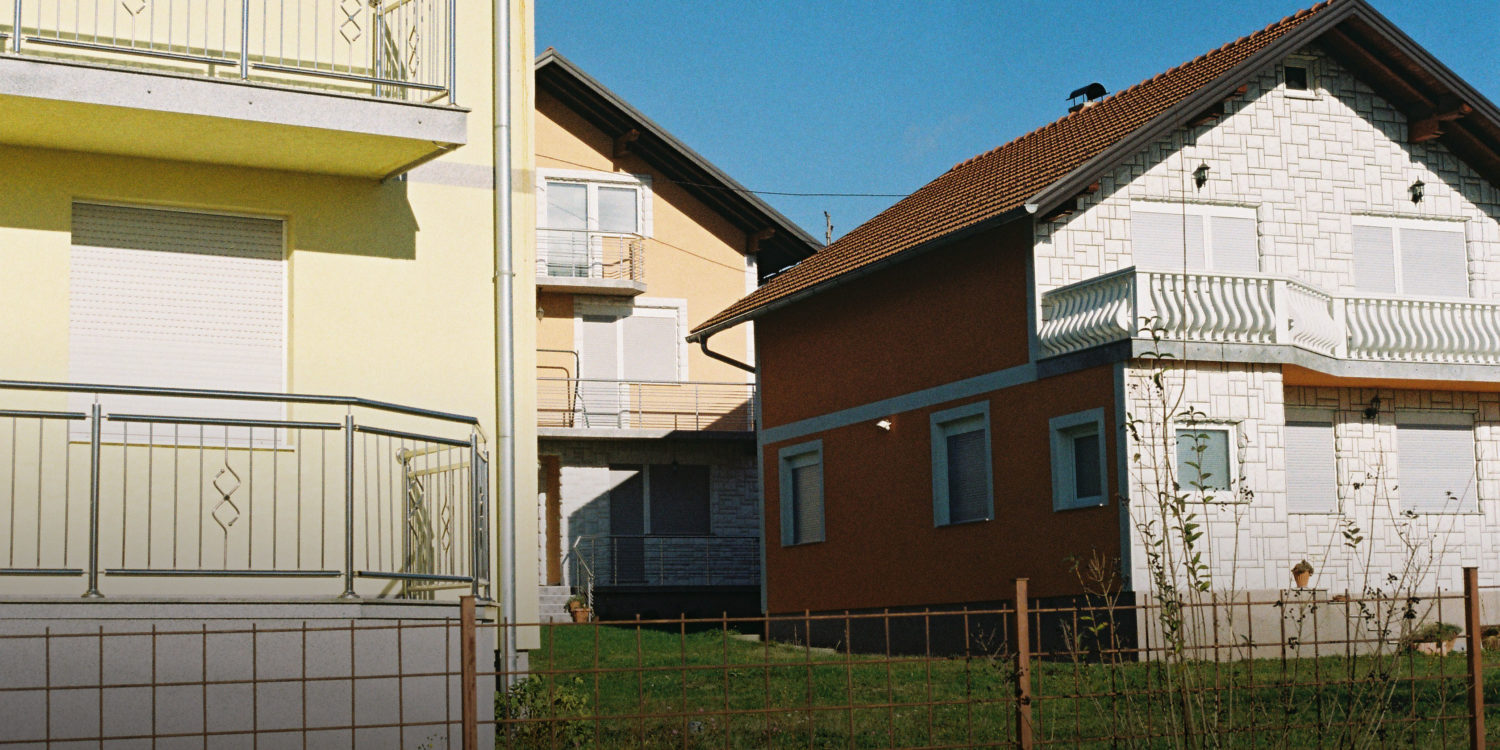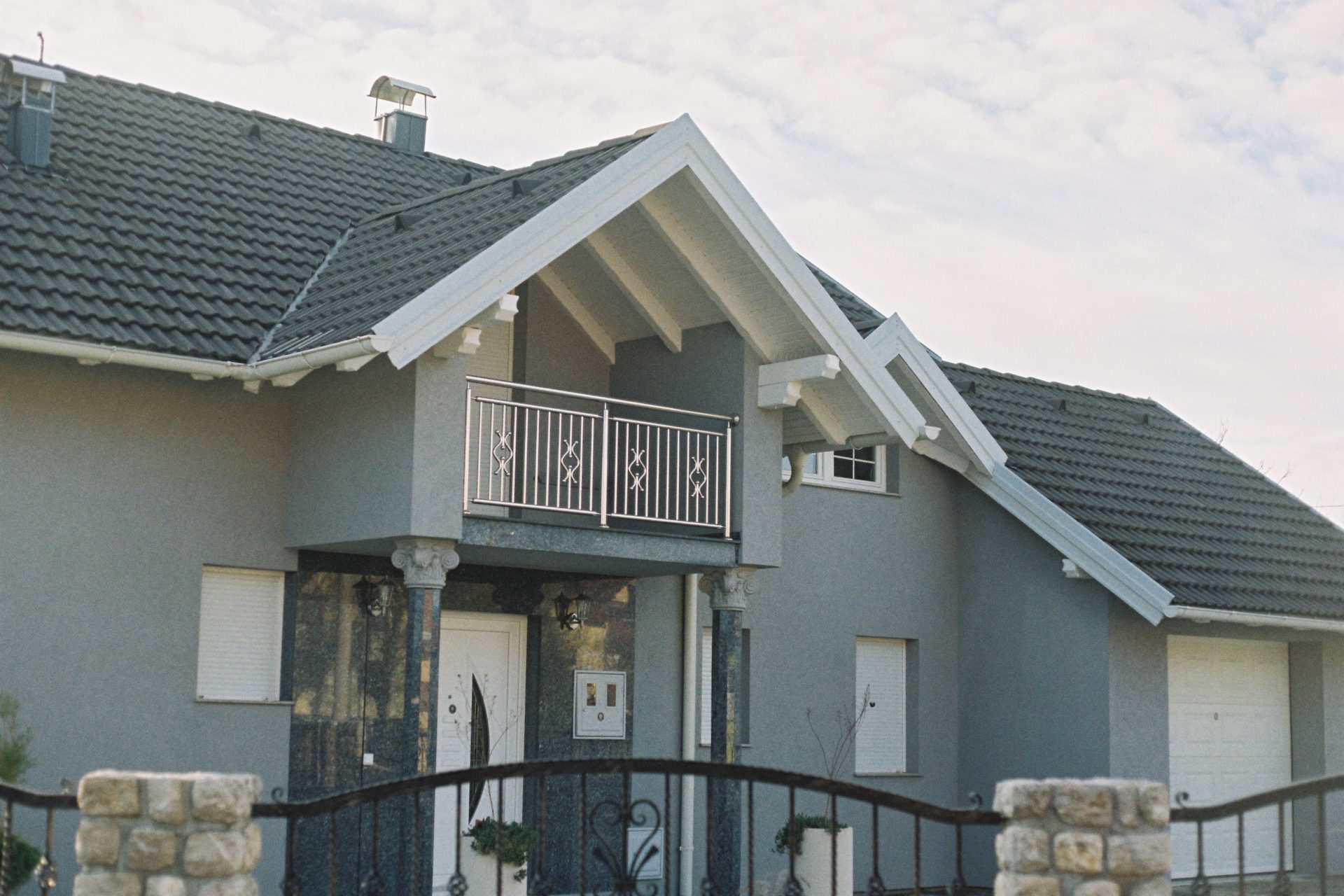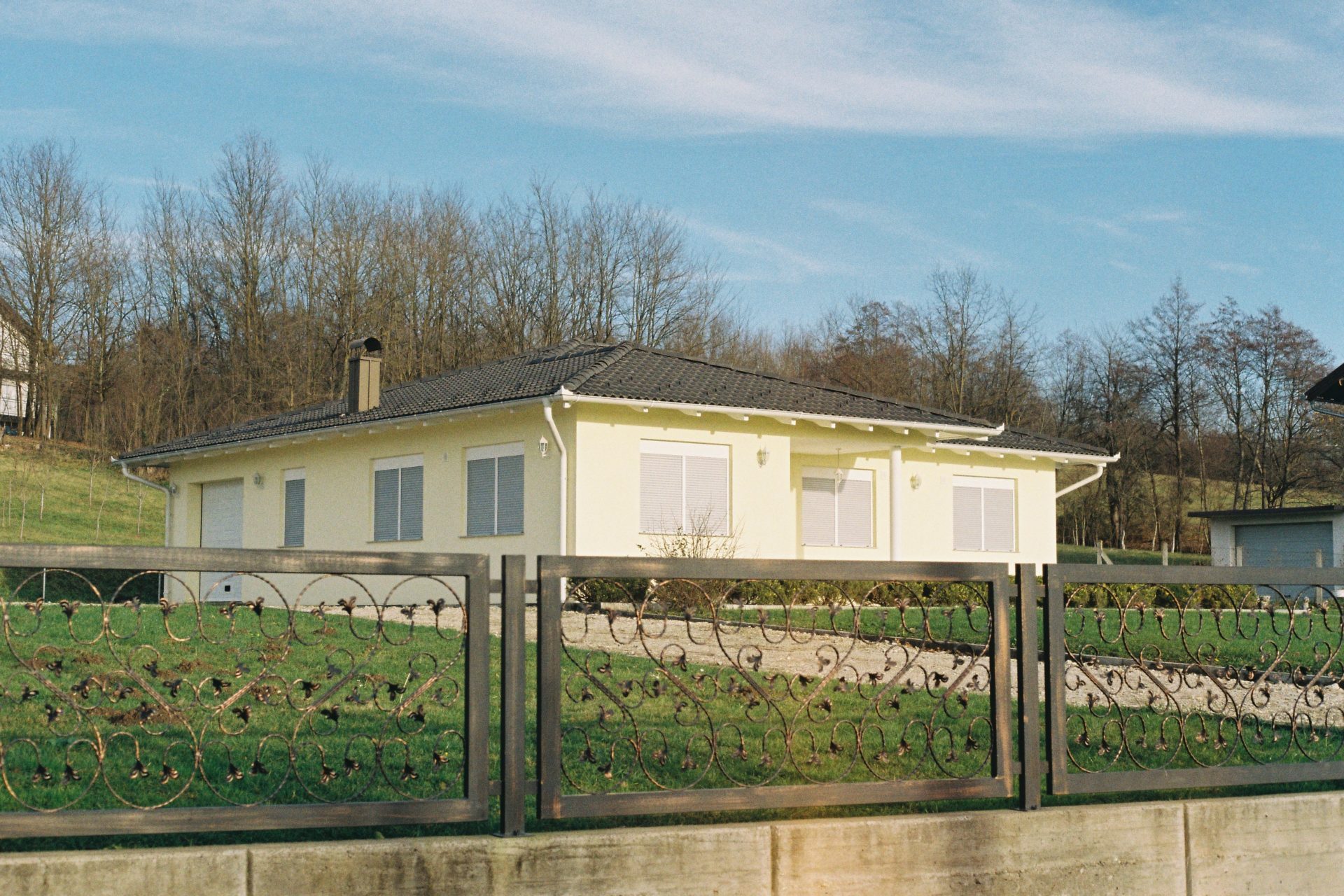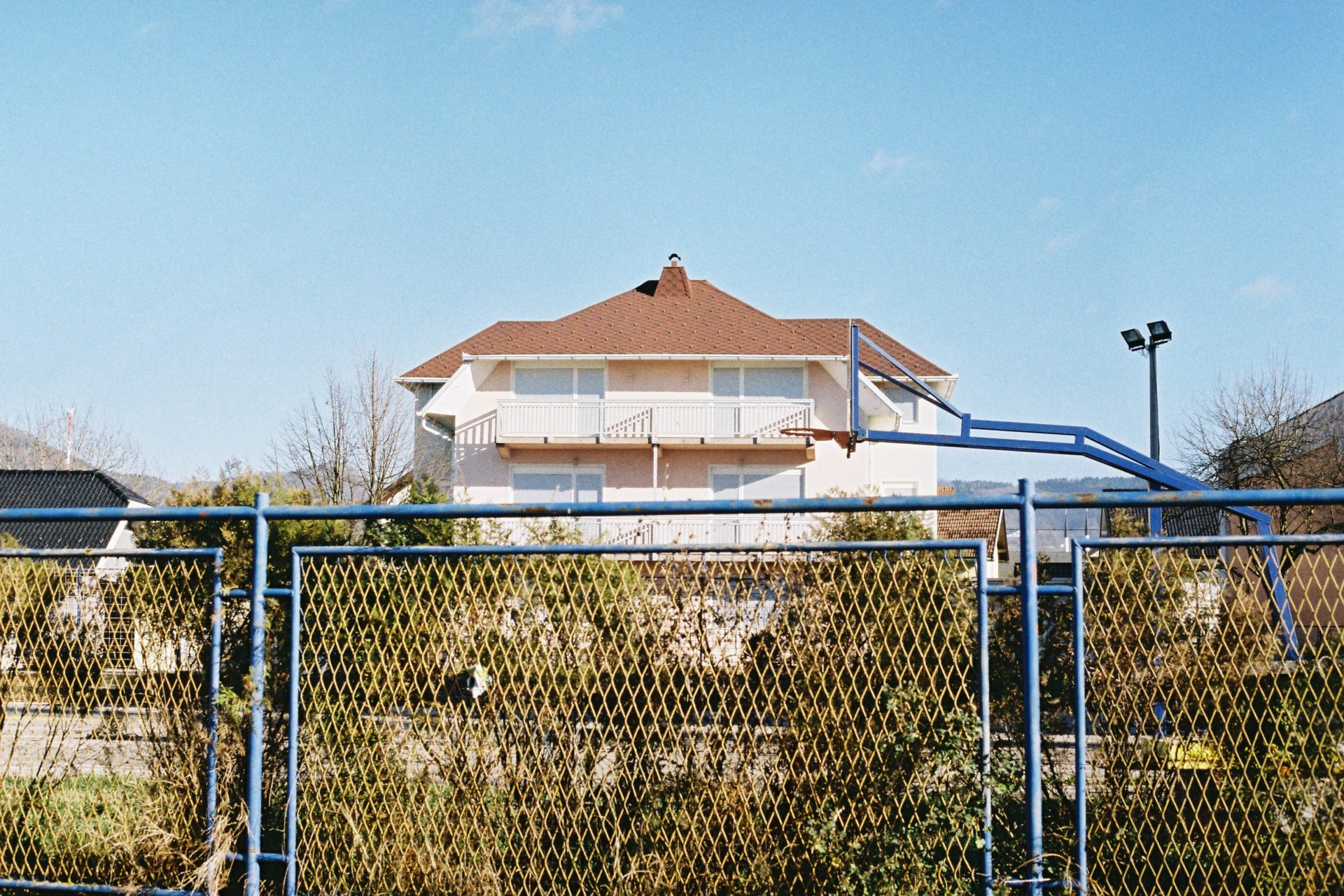Upon entering Kozarac, a small town in Bosnia & Herzegovina, one is struck by a sense of serene emptiness – even though the city teems with houses. Many of these houses are loud where the streets aren’t, employing eclectic styles and materials with abandon; but nevertheless there is no laundry on drying racks, no garden chairs or forgotten toys in the countless yards. The paint on the walls is fresh and the shutters are closed, yet where the owners have gone is no mystery. Locals maintain they have learned how to “decipher” a house to learn where the absent owners currently reside: ground floor houses are owned by the “Swedes” and “Norwegians”, while “Austrians” and “Swiss” usually opt for three-story chalet-inspired ones. Yet, one also finds many that are curious and indecipherable, like one in the shape of a pentagon (and owned by a “Swede”). All these structures are so-called remittance houses, built by members of the Kozarac diaspora, living all around the world.
The Diaspora began in the ‘60s and ‘70s in Yugoslavia with the Gastarbeiter program, designed to recruit guest workers from western democracies while exporting the local workforce to Yugoslav non-aligned allies in Africa and the Middle East. A second migration wave occurred during the war of 1992-1995 which saw Kozarac completely destroyed and ethnically cleansed of its entire Muslim population, with those who weren’t killed outright fleeing the city. Today, Kozarac has recovered and is one of the most extreme examples of Bosnian remittance landscapes and the city with the most returnees in Republika Srpska. The younger generation is still leaving, however, finding themselves stymied by the lack of political and economic stability in post-war Bosnia, particularly in Republika Srpska, where the local government is more interested in revisionist efforts to repress the past. Yet many of those who left still strive to own a dwelling back home in Kozarac. Some will rent flats, but others will embark on the strenuous process of building a new home from scratch.
But owning a house in Kozarac is no passive investment. One man has built his house three times. The first iteration was a traditional Bosnian adobe brick house he built while living in Yugoslavia, which in the ‘80s he upgraded extensively with money he had made working in Slovenia and Libya. After it was destroyed in the war, he and his family fled Bosnia & Herzegovina for Italy, where they set about the project of rebuilding yet again. Construction began in 2002 while still in Italy, with him providing remote instructions and his aunt’s son, back in Kozarac, updating him via photographs and videos. The process was necessarily time-consuming and haphazard, without a set deadline, and built in fits and starts depending on the availability of money to pay for both materials and workers’ daily wages. The house itself is likewise informal, teeming with multiple additions and extensions made during construction in an attempt to adjust to the ever-changing situation. For example, two floors were initially built for the children, but one was swiftly converted into a guest floor after the daughter married a man from Kozarac and would no longer live at home. The wall in another guest bedroom features typical outlets for kitchen appliances. There’s also one more guest floor than originally planned above the garage to accommodate new family members. The latest addition to the house is an outdoor space for grilling. In their retirement, the homeowners finally returned to Kozarac and began living in the house they had been building for the last twenty years, but the construction is still not complete. The building will only be complete when they are no longer around to make their constant modifications: “when it’s finished”, the homeowners say, “it’s time to go!”
Another house in Kozarac belongs to a family who has lived outside Bosnia & Herzegovina since the ’70s. Their current house, located in the center of Kozarac, was rebuilt on the ruins of a previous one, out of a sense of responsibility towards the destroyed city. For the family, not having a place to come to in Kozarac was unimaginable. The first and second floor of the house accommodate two identical apartments for their two sons. These “floors for children” are an essential way to ensure the participation of new generations in preserving the home: in this way, maintaining and upgrading the house becomes a way to maintain and upgrade familial identity. On the ground floor, there is a garage that is equipped to be used as an office. A former cafe space has now been turned into a holiday house and laundry room. All the apartments have the possibility of a separate entrance. The ability to swiftly adapt to the shifting economic and familial status of their owners is a prized characteristic of remittance houses, even if they remain empty for the majority of the year. Migrants maintain the houses while also keeping them as flexible as possible, knowing they may not return with the same needs with which they left.
Maintenance of the remittance houses is essential as the residents are mostly absent, with responsibilities falling to the residents who remain. One Kozarčanin has the keys to eight houses that belong to his absent neighbors, who only visit once or twice a year. He takes care of the houses, waters the plants, turns on the heating in anticipation of owners’ return, and takes the shutters up to deceive potential burglars. Additionally, almost every home is secured with multiple sensors and cameras, as well as stainless steel fences. The cameras also offer the residents the ability to view live images at any time, blurring the distinction between strictly separate lives of “there” and “here”. One Kozarčanin who lives in Switzerland connects to the neighbor’s camera across the street in Kozarac, so that he can observe his house’s construction. The constant act of collecting and archiving also continuously updates the diasporic story. Those who have left remain tied to the city by the new videos which emerge every week, watching the Thursday market days, the activity on the streets, the new houses being erected and others’ diaspora visits.
But even constant, at-one’s-fingertips observation of the city does not preclude the tradition of summer visits back home. These can often be riotous affairs and joyous homecomings: on one summer day, a few years ago, twenty-eight couples got married in Kozarac, with many tents erected for the occasion in the large yards of diaspora houses. In contrast, in the summer of 2020, due to the current Covid pandemic, only three weddings took place. The overall number of visitors from diaspora was ten times smaller than usual, leaving the streets empty and disrupting the city’s economy, which relies extensively on far-flung residents’ annual returns home. During the bulk of the year, Kozarac is relatively empty and most restaurants and cafes are closed. In the summer months prices rise and a convivial atmosphere takes hold—some events, such as the annual Days of Kozarac celebration, go on for weeks. The yearly return is also an opportunity to observe commemorative practices and other collective rituals of mourning. Mass funerals are still occurring, since the mortal remains of many Kozarčans killed in war are still being excavated every year.
The form of the remittance house is in no way limited to Bosnia and Herzegovina. Sarah Lopez Lynn has written about Mexicans immigrating to the US and investing in houses, public buildings and infrastructure projects back home. Architecture offices in Guatemala specialize in “Casas de Remesa”—remittance houses for its diaspora. Doug Saunders wrote in Arrival City about the elaborate houses he encountered in Sylhet, Bangladesh, and the transformation this traditionally rural area underwent thanks to Bangladeshis working and living in England. Similar destinies befall nearly all countries where emigration is on the rise. Building a home somewhere, while living elsewhere, is a symptom of a global labor market.
However, remittance architecture has entered public discourse only recently. The rapid intensification of globalization following the end of the Cold War led to increased migration, which has intensified the production of remittance houses. By standing empty, these houses offer a potent symbol of the increasing stresses of global capitalism (and, particularly, the globalized job market) on existing communities. At the same time, the durability and permanence of remittance architecture challenge the notion of the restless and placeless migrant.
The remittance house is often stigmatized, reduced to its eclectic façades. The predominance of these buildings inevitably reveals the differences in economic standing between the countries of residence for the diaspora and their home countries, further reinforcing neo-colonial narratives of belonging, identity and inferiority. Instead of being seen as a vital link to home, they can be othered and displayed as symbols of unnecessary luxurious consumption, or the remains of a tragic life spent in-between, of kitsch aesthetics, and so on. By placing remittance architecture in an ambivalent theoretical realm, the migrant is kept in the same space as well, perceptible as an object of observation and contemplation, but not a living thing.
For the members of the Kozarac Diaspora, there is almost an innate instinct to build a house back home, and to do otherwise becomes unthinkable. Without one, the migrant runs the risk of losing the physical surroundings they used to define themselves: a physical house, of course, but also the city streets, their family, friends, memories, and language. Mirjana Lozanovska, in her book “Migrant Housing”, writes about Atanas and his Churuk House—a Macedonian term for a bad, ugly house. Atanas emigrated to Australia as an economic migrant from Macedonia, buying a house back home, which he continues to change, upgrade and adapt 40 years later. Despite his constant efforts, it remains, for him, the Churuk House, his body dismissing it as its natural extension. Despite architecture being a product of human bodily labor, this same architecture defines the body, according to Lozanovska—the notion of the human subject does not exist outside the object of architecture. The most extreme example of this relationship is the violence of war, where the architecture that constitutes the body—the city, the house—is physically annihilated.
In the short film The Invisible Hand of My Father, Georgian artist Giorgi Gago Gagoshidze tells the story of his father, a former director of a car factory who, after the collapse of the Soviet Union, was forced to work in Portugal as a construction worker where his right hand was torn away by a concrete mixer. He returns home and lives as a farmer with a prosthesis that his body does not accept as its natural extension. His lost hand, however, is still somewhere out there, a phantom limb, which continues to work invisibly and provides its owner with a livelihood in the form of a Portuguese pension.
As the father’s invisible hand works somewhere for him, so does a migrant’s home, functioning similarly to a missing limb. To own a piece of the homeland is to capture a piece of space on it, and thus provides a psychic palliative of continuation: the remittance house becomes a ‘cure’ for the migrant’s phantom pain. It is an extension of the body, a synecdoche for all that is lost, a reflection of the past and inevitably, the present. The devastating effects of displacement on a migrant body, the violence of the war and systematic revisionist efforts, the cruelty of global capitalism and neo-colonization are all materialized in this structure, but, it is at the same time an act—individual, but also defiant—against these forces.
Research would not have been possible without Amel and the other people of Kozarac who shared their stories with me and opened the doors of their homes.




